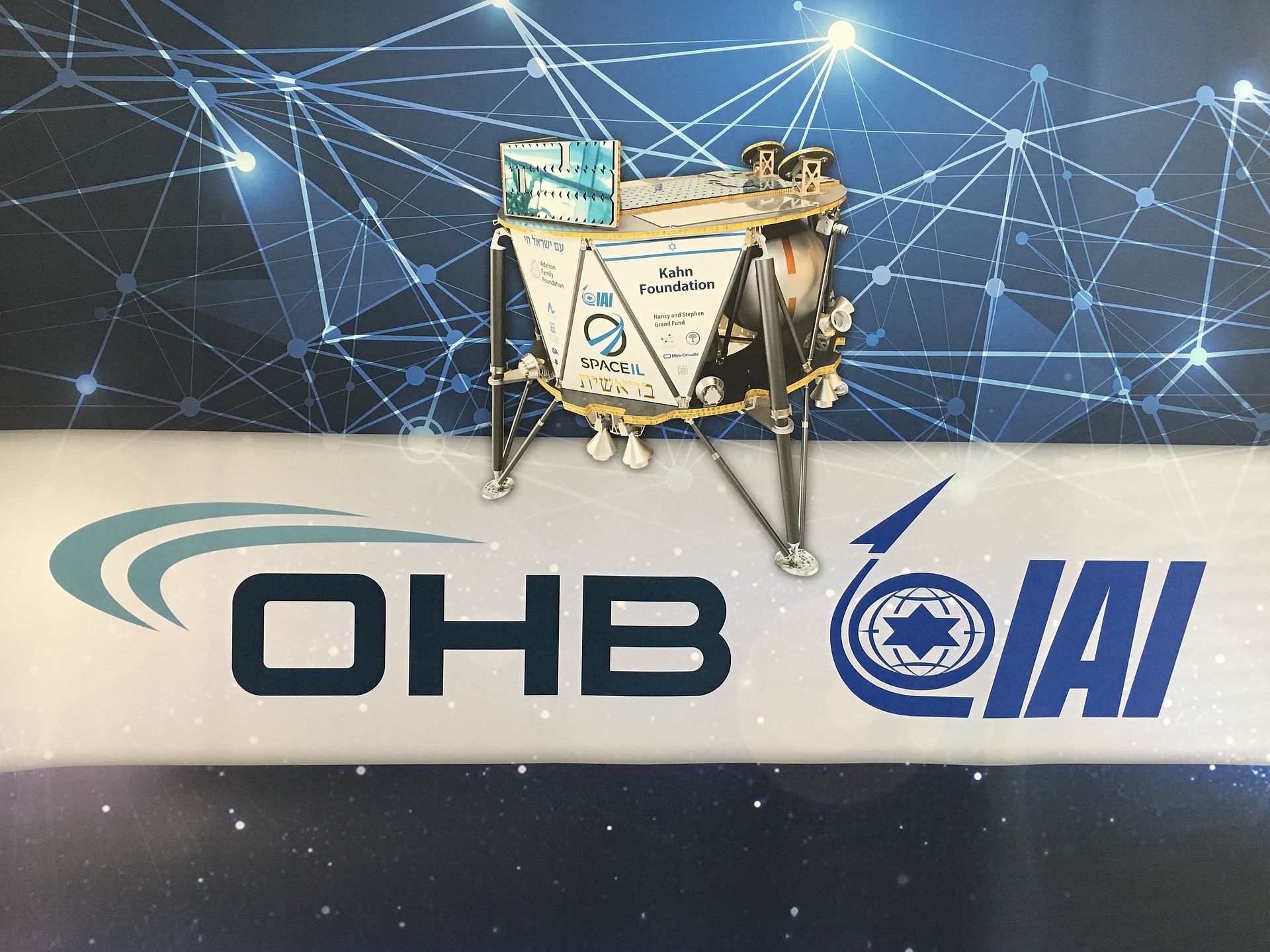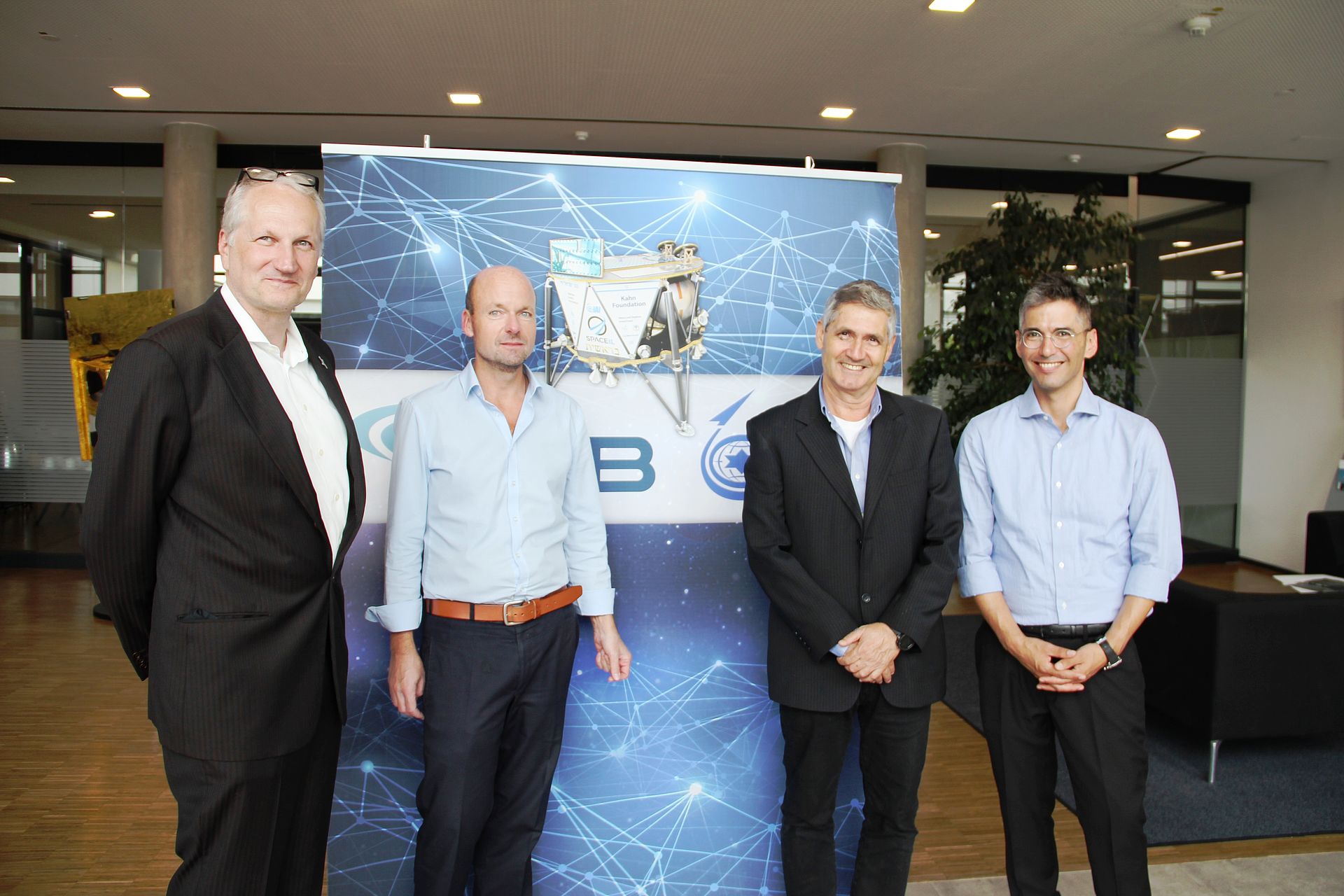Oberpfaffenhofen, September 27, 2019. This January, OHB System AG and Israel Aerospace Industries (IAI) joined forces in developing a lunar landing service on a commercial basis. Following up on the initial agreement, the partners invited interested parties from the scientific and commercial sectors to a user workshop at the OHB premises in Germany to learn more about their specific requirements.
LSAS - A Lunar Landing Service
The service, termed “Lunar Surface Access Service (LSAS)”, relies on the design of the “Israeli Lunar Lander” (ILL). The ILL in turn is derived from the Beresheet lunar lander spacecraft (co-developed with NGO SpaceIL) that went on its maiden flight earlier this year carrying a small science payload. The follow-on ILL design increases payload accommodation options and mass capacity and forms the basis of the LSAS lunar landing service offered by OHB System AG and IAI. Customers can either fly fixed payloads or deployable payloads accommodated on a robotic arm for placement or deployment onto the ground, and release small satellites into lunar orbit.
“The key advantage of LSAS is the available flight heritage through Beresheet, providing a significant competitive edge in terms of risk and schedule over potential commercial lunar landing competitors”, says Opher Doron of IAI. “We are open for business and ready to launch our first lander in cooperation with OHB as early as 2021”. The LSAS consortium made up of IAI and OHB has been working with possible customers (including the European Space Agency ESA) towards a competitively priced lunar landing mission carrying several scientific, technological and commercial payloads.
Primarily tasked with marketing LSAS to European customers, project and mission tailoring and coordination as well as payload accommodation, OHB System AG will also support the development of the lander itself and especially the landing technology using its broad array of expertise and the heritage accumulated in nearly 40 years in the aerospace sector.
The workshop the partners held today attracted attendees from scientific institutes, commercial enterprises as well as the European space agency ESA. “The intent of the workshop was to better understand market requirements and discuss payload accommodation requirements”, says Dr Timo Stuffler, Director Business Development OHB. “We also presented and discussed a roadmap to the first mission under the LSAS collaboration”.
Forward to the Moon! On an international basis
Aside from commercial actors both in Europe and the US, lunar surface exploration also continues to be pursued by institutional programs, in particular by China and India. “It is this exciting mix of government-led and commercially undertaken lunar missions that will lead to the envisioned near-term return of humans to the lunar surface as early as 2024, with an intended sustained presence of humans in cis-lunar space from the second half of the twenties. Beyond human missions, lunar robotic missions will play an important role and be in OHB’s focus“, adds Dr Lutz Bertling, Board Member of OHB SE. “Landing and return capabilities will be key. We are extremely proud to also cooperate with the US company Blue Origin on the larger scaled moon lander Blue Moon. Their lander is designed to accommodate an overall payload mass of approximately 5,000 kg.”

SpaceIL’s and IAI’s first Moon Mission
In February 2019, the Israeli Beresheet lunar lander spacecraft left Earth as the first ever privately funded space mission to successfully orbit the Moon. Beresheet was led by the non-profit SpaceIL, working with IAI as co-developers. SpaceIL was the only contestant of the Google Lunar X-Prize to actually launch a lunar landing mission. The lightweight design of the lander was successfully put through its paces during the overall mission. The lander went into a lunar orbit, however, the soft-landing maneuver led to a high-speed impact with the ground due to a commanding problem during powered descent, the cause of which has been fully traced and understood. Over 95% of the hardware and systems functioned as expected and gained heritage.
The historical Beresheet mission achieved critical accomplishments and paved the way for the entire commercial low cost cis-lunar economy, by proving the validity of a rideshare integration with a GTO payload, the use of phasing orbits for mission flexibility while surviving the Van Allen radiation belts, and performing precise navigation and ranging without GPS.
OHB’s Moon Missions
In 2014, OHB carried out its own lunar mission in memory of the late company founder Manfred Fuchs. It was a privately funded payload, referred to as the Manfred Moon Memorial Mission (4M), and was launched as a piggyback payload on the Chinese Chang’e 5-T1 lunar probe. From lunar orbit, the 4M payload broadcast on loop messages from family, friends and companions of Manfred Fuchs, which could then be received by radio amateurs all over the world.
The SMART-1 mission of OHB Sweden (formerly SSC) from 2003 to 2006 was the first lunar orbiting mission utilizing solar-electric propulsion for Earth-Moon transfer and lunar orbit capture.
“The Moon has always been of special interest to OHB. Our founder Manfred Fuchs had long understood the necessity to research and exploit our closest neighbor in space. We are working on several studies and projects ranging from transportation to and from the Moon, exploitation of Moon resources to 3D printing and creating an organic matrix as substrate for higher plants. Thus, we are thrilled about the general interest in the Moon and to be able to contribute with our expertise and enthusiasm”, adds Dr Timo Stuffler, Director Business Development OHB.
Why to the Moon?
Dr Lutz Richter, Project Manager ‘Future Projects Science & Exploration’ at OHB System AG and project manager of the LSAS collaboration with IAI, on why the Moon is worth studying:
“As opposed to the geologically extremely active Earth with its plate tectonics, atmosphere and liquid water, the Moon is a rather quiet object. Sample returns from the Moon to Earth, mainly carried out by the astronauts of the Apollo missions, demonstrate that the Moon formed as a result of an impact of a Mars-sized body with Earth (shortly after formation of the planets more than 4 billion years ago), and the Moon also contains material originally residing in Earth’s interior. Because of its lack of plate tectonics and thus lack of large-scale surface “recycling”, and due to the lack of atmosphere, it holds a record of the impact history of the Earth-Moon system that afflicted also our home planet.
On the Moon, this impact history is very well preserved, and one objective of future lunar exploration is to get a better understanding of impact chronology to allow a more solid estimation of the future impact threat from asteroids and comets on the Earth. Also, sampling and sample return from the Moon from a number of high priority sites that have not been sampled during the Apollo program will be necessary to improve the understanding of the geochemical and geophysical evolution of both the Earth and the Moon, both being referred to as “terrestrial planets” in solar system science. Finally, the recently confirmed volatile deposits near the lunar poles will need to be visited and sampled by future missions as they will teach us about comets that constitute the likely source of these ices.”
Contact for media representatives:
Marianne Radel
Head of Corporate Communications
Phone: +49 421 2020 9159
Email: marianne.radel@ohb.de
Contact for investors and analysts:
Marcel Dietz
Investor Relations
Phone: +49 421 2020 6426
Email: ir@ohb.de

